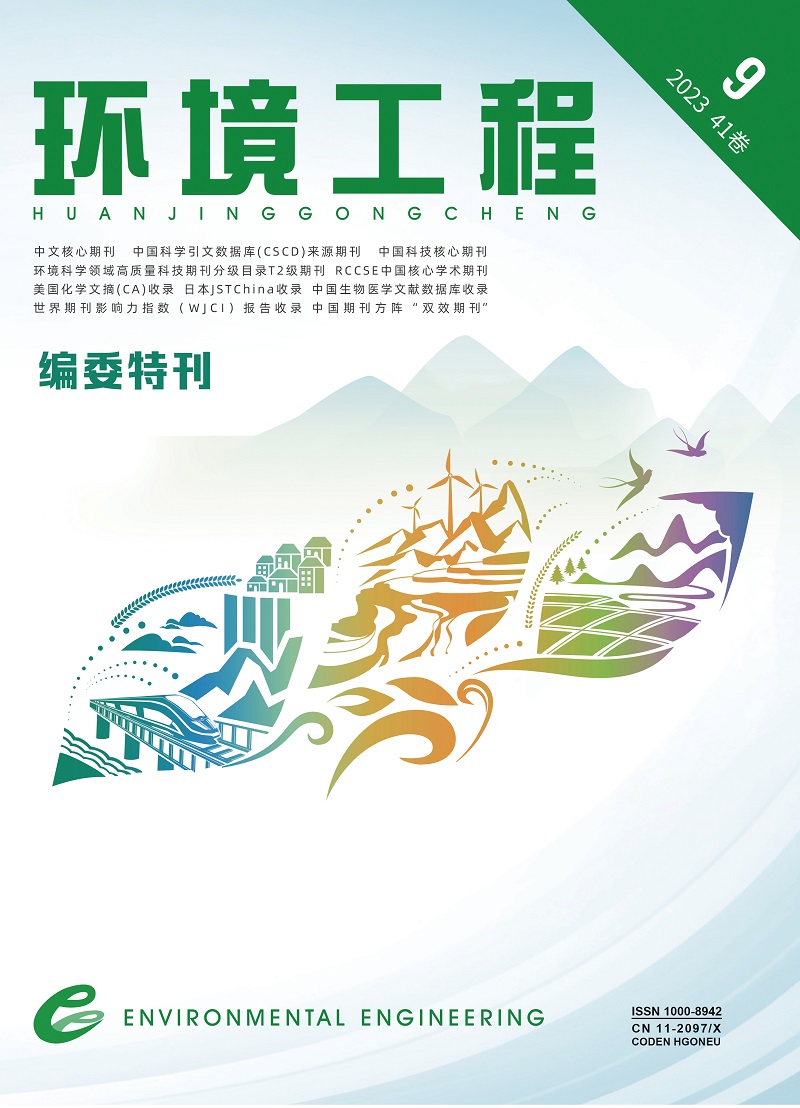| [1] |
MASSON-DELMOTTE V,ZHAI P,PÖRTNER H,et al. Global Warming of 1.5℃[M/OL]. An IPCC Special Report:Summary for Policy makers; Intergovernmental Panel on Climate Change (IPCC):Geneva,2018.
|
| [2] |
习近平在第七十五届联合国大会一般性辩论上发表重要讲话[N/OL].新华网.[2020-09-22]. http://www.xinhuanet.com/politics/leaders/2020-09/22/c_1126527647.htm.
|
| [3] |
国务院新闻办公室. 强化应对气候变化行动:中国国家自主贡献[EB/OL].(2015-11-18) [2020-01-08]. http://www.scio.gov.cn/xwfbh/xwbfbh/wqfbh/35861/37265/xgzc37271/Document/1603661/1603661.htm.
|
| [4] |
于方,宋宝华. 二氧化碳捕集技术发展动态研究[J].中国环保产业, 2009(10):27-30.
|
| [5] |
康重庆,陈启鑫,夏清. 应用于电力系统的碳捕集技术及其带来的变革[J]. 电力系统自动化, 2010, 34(1):1-7.
|
| [6] |
科学技术部社会发展科技司,中国21世纪议程管理中心.应对气候变化国家研究进展报告2019[M]. 北京:科学出版社, 2019.
|
| [7] |
乌若思,苏文斌,郑松. 挑战全球气候变化:二氧化碳捕集与封存[M]. 北京:中国水利水电出版社, 2008:1-58.
|
| [8] |
LI K K, LEIGH W, FERON P, et al. Systematic study of aqueous monoethanolamine (MEA)-based CO2 capture process:techno-economic assessment of the MEA process and its improvements[J]. Applied Energy, 2016, 165:648-659.
|
| [9] |
OH S Y, KIM J K. Operational optimization for part-load performance of amine-based post-combustion CO2 capture processes[J]. Energy, 2018, 146:57-66.
|
| [10] |
THIRUVENKATACHARI R, SU S, AN H,et al. Post combustion CO2 capture by carbon fibre monolithicadsorbents[J].Progress in Energy and Combustion Science,2009(35):438-455.
|
| [11] |
MUCHAN P, NARKU-TETTEH J, SAIWAN C, et al. Effect of number of amine groups in aqueous polyamine solution on carbon dioxide (CO2) capture activities[J]. Separation and Purification Technology, 2017, 184:128-134.
|
| [12] |
XIAO S N, LIU H L, GAO H X, et al. Kinetics and mechanism study of homogeneous reaction of CO2 and blends of diethanolamine and monoethanolamine using the stopped-flow technique[J]. chemical engineering journal, 2017, 316:592-600.
|
| [13] |
JIANG G D, HUANG Q L, KENARSARI S D. A new mesoporous amine-TiO2 based pre-combustion CO2 capture technology[J]. Appl. Energy, 2015, (147):214-223.
|
| [14] |
方梦祥, 周旭萍, 王涛. 等. CO2化学吸收剂[J]. 化学进展, 2015, 27(12):1808-1814.
|
| [15] |
KELVIN O Y, MICHAEL O D, PATRICK T S, et al. Advances and emerging techniques for energy recovery during absorptive CO2 capture:a review of process and non-process integration-based strategies[J]. Renewable and Sustainable Energy Reviews, 2021,147, 1364-0321.
|
| [16] |
MAEDA K, OWADA M,KIMURA N,et al. CO2 fixation from the flue gas on coal-fired thermal power plant by microalgae[J]. Energy Convers Manage, 1995, 36(69):717-720.
|
| [17] |
OH S Y, BINNS M, CHO H, et al. Energy minimization of MEA-based CO2 capture process[J]. Applied Energy, 2016, 169:353-362.
|
| [18] |
FYTIANOS G, UCAR S, GRIMSTVEDT A, et al. Corrosion and degradation in MEA based post-combustion CO2 capture[J]. International Journal of Greenhouse Gas Control, 2016, 46:48-56.
|
| [19] |
LIU J, WANG S J, ZHAO B, et al. Absorption of CO2 in aqueous ammonia[J]. Energy Procedia, 2009, 1(1):933-940.
|
| [20] |
KNUUTILA H, SVENDSEN H F, ANTTILA M. CO2 capture from coal-fi red power plants based on sodium carbonate slurry:a systems feasibility and sensitivity study[J]. International journal of greenhouse gas control, 2009(3):143-151.
|
| [21] |
WANG R J, LIU S S, LI Q W, et al. CO2 capture performance and mechanism of blended amine solvents regulated by N-methyl cyclohexyamine[J]. Energy, 2021, 215(Part B):119209.
|
| [22] |
IDEM R, GELOWITZ D, TONTIWACHWUTHIKUL P. Evaluation of the performance of various amine-based solvents in an optimized multipurpose technology development pilot plant[J]. Energy Procedia, 2009, 1:1543-1548.
|
| [23] |
YU K, CURCIC I, GABRIEL J, et al. Recent advances in CO2 capture and utilization[J]. Chem Sus Chem, 2008, 1:893-899.
|
| [24] |
安山龙, 汪黎东, 于松华. 相变溶剂捕集CO2技术的研究进展[J]. 化工环保, 2017, (1):31-37.
|
| [25] |
BLANCHARD L A, DAN H, BECKMAN E J, et al. Green processing using ionic liquids and CO2[J]. Nature, 1999, 399(6731):28-29.
|
| [26] |
樊丽华,聂阳,梁英华. 离子液体吸收CO2的研究进展[J]. 化工环保, 2010, 30(2):136-140.
|
| [27] |
ZHANG X, FU K, LIANG Z, et al. Experimental studies of regeneration heat duty for CO2 desorption from diethylenetriamine (DETA) solution in a stripper column packed with dixon ring random packing[J]. Fuel, 2014, 136:261-267.
|
| [28] |
KOTHANDARAMAN A, NORD L, BOLLAND O, et al. Comparison of solvents for post-combustion capture of CO2 by chemical absorption[J].Energy Procedia,2009(1):1373-1380.
|
| [29] |
杜云贵, 辜敏, 刘涛. 捕集二氧化碳气体的复合胺及复合胺吸收剂:重庆,CN102218254A[P]. 2011-10-19.
|
| [30] |
白亚开. 基于乙醇胺法与氨水法碳捕集能耗特性分析与系统优化[D]. 保定:华北电力大学, 2015:66.
|
| [31] |
郭宇红. 燃煤电厂碳捕集技术及节能优化研究进展[J]. 山西电力, 2021(6):46-49.
|
| [32] |
KIM H, HWANG S J, LEE K S. Novel shortcut estimation method for regeneration energy of amine solvents in an absorption-based carbon capture process[J]. Environmental Science & Technology, 2015, 49(3):1478-1485.
|
| [32] |
YU C H, HUANG C H, TAN C S. A review of CO2 capture by absorption and desorption[J]. Aerosol and Air Quality Research, 2012, 12(5):745-769.
|
| [33] |
RAZA A, GHOLAMI R, REZAEE R, et al. Significant aspects of carbon capture and storage:a review[J]. Petroleum, 2019,5(4):335-340.
|
| [34] |
van den BROEK M, HOEFNAGELS R, RUBIN E,et al. Effects of technological learning on future cost and performance of power plants with CO2 capture[J]. Progress in Energy and Combustion Science, 2099, 35(1):457-480.
|


 Login
Login Register
Register E-alert
E-alert






 DownLoad:
DownLoad: